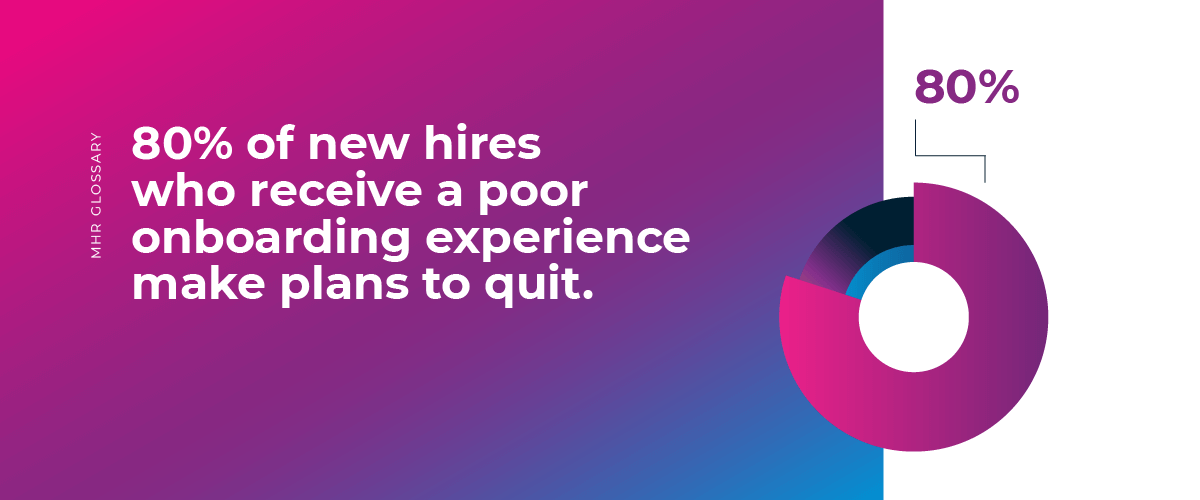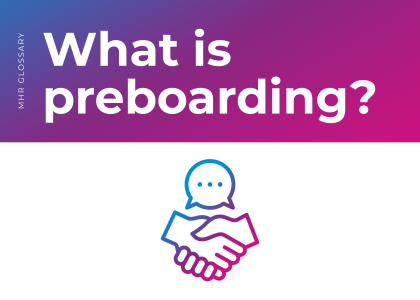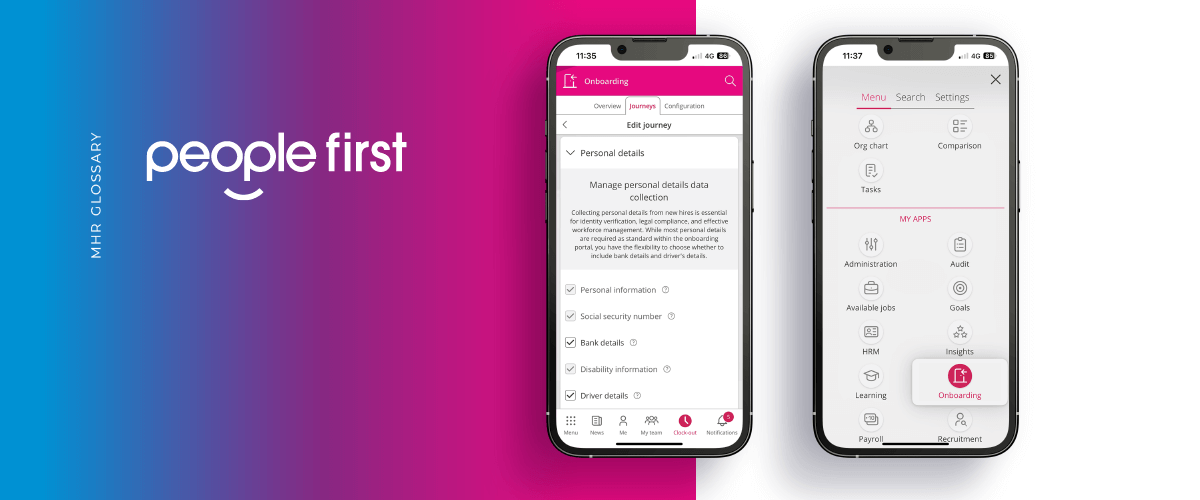What is the purpose of preboarding?
Everyone knows how important welcoming new hires into your ecosystem effectively is. Onboarding has become a key part of the recruitment process. From the moment you make contact with a potential new hire, you’re technically onboarding them. Every interaction informs their opinion of you and your company, from how promptly you respond to them to the tone your interactions take.
Preboarding is an acknowledgement of this shift in perspective. It occurs when you extend a job offer to a candidate, and typically involves some of the nitty gritty technical aspects of getting someone hired, acting as something of a bridge between recruitment and onboarding. That means it covers things like HR paperwork, insurance, IT set up and any other practical concerns.
Preboarding plays a key role in the employee lifecycle. By taking this into account, you ensure every employee has a smooth experience on their first day. This helps them settle in immediately and creates a welcoming environment.
Think about it. If someone arrives for their first day, and their manager spends most of it rushing around trying to find them their equipment or fill in some last forms, that points to some broader issues with the company that can be incredibly off-putting. With a robust preboarding strategy, you’ll minimise this risk and create consistent experiences that get new hires excited to jump in at the deep end.
Preboarding vs onboarding
Preboarding and onboarding go hand in hand, but there are some key differences between the two. Preboarding is about what happens before the candidate arrives, onboarding starts when they do.
Onboarding is about culture, making sure the new hire understands what it’s like to work in your organisation on a daily basis. It gets them to understand the nuances of their role and how that might differ from similar roles at other organisations. It also involves introducing them to their new team. Preboarding is about practical considerations. Are their forms all filled out? Do they have the right laptop? Is there any documentation to go through? Preboarding takes care of this.
Ultimately, you can’t really have one without the other, both processes complement each other perfectly. A perfectly preboarded candidate who isn’t given onboarding will be left floundering, while an onboarded candidate without preboarding won’t have the tools they need to start their job.
The importance of preboarding
Preboarding has a vital part to play in a new hire experience and has a huge impact on employee retention.
Did you know that 80% of new hires who receive a poor onboarding experience make plans to quit? Imagine spending your first day sitting around waiting for paperwork that should have been done weeks ago. It makes the company looks sloppy and unprepared.
First impressions count for everything, and with so many organisations being plagued skill gaps and vacancies, you really can’t afford to neglect this. Employees have the power to look elsewhere.
So now you know how important preboarding is, what elements do you need to consider?

Essential elements in a preboarding process
Every preboarding process is a little different, but there are some essential elements that should be used by everyone.
A structured roadmap is the most important. Plot out exactly what will happen to a candidate and when. This will give you something to return to if there’s ever any uncertainty as to what to do next. It also can be given to the new hire so they know exactly what to expect.
You may also want to supply some useful documentation, including FAQs.
Consider talking to your current employees (ideally the most recent new hires) about their experiences when they first joined you. Where were the friction points? What answers did they have to find for themselves? This could include things like where to get food, where to park, where the bathrooms are, and any accessibility features that they might like to know about (such as prayer rooms, nursing rooms and lifts). Your company handbook will also be useful.
Preboarding is also the time to get as many basic admin tasks out of the way as possible. No one’s first day should be packed full of boring admin, instead it should be spent settling in and getting to know people.
As part of your preboarding, you should also consider your company values, and figure out ways to ensure these are emphasised within the rest of your recruitment process. While preboarding should be focused more on practicalities, you can take some time to consider these ideas, as it will ensure they run through everything you do. Take some time to talk about the history of your company, any achievements or other key features that will get someone excited to work with you.
The most important thing to do with preboarding is to soothe any nerves a new hire might have. This could involve setting up social events, engaging them in direct conversation and making introductions where possible. If you can, try to avoid too many boilerplate letters, they can tend to blur together!
Best Practices for Effective Preboarding
The exact nuances of your preboarding process will heavily depend on what your organisation looks like. However, there are some near universal best practices that you can make use of to ensure a good starting strategy.
Stay in touch
This one’s pretty simple. Make sure to send a friendly note to new hires between them receiving an offer and starting the role. This could take the form of a short video, a personalised message or any other technique to get your new hire excited to join you. You can also include any paperwork, but ideally it should be separated from the welcome message.
Manage paperwork
Your HR and payroll team should be ready to manage essential documents for new hires quickly. E-signature services can make this a lot quicker and help digitise your record-keeping. That’s a lot easier to track than endless paper. Ideally, there should be minimal paperwork.
Find mentors
Even if you hire an expert in their field, joining a new company can be an incredibly daunting prospect. Having a mentoring system in place can help with team integration. These don’t have to be people who do the same or similar job as the new hire, and in fact they should ideally be outside of the typical line manager relationship. Having someone to go to who can answer questions can be a great comfort for a new hire.
If you’re filling a more junior role offering mentorship to help bring their skills up can also be a great opportunity for you and for them.
Spell out expectations
This ideally should have happened when you set out the role, but you’ll want to make sure your new hire has a clear picture of their responsibilities and initial goals. This can include details on who they’ll be reporting to and any KPIs they’ll want to consider. Try not to overload them with details- especially regarding KPIs, but this will minimise the risk of any misaligned expectations between you and the employee.
Navigate IT
You can’t underestimate the power of a smooth first day, and IT has a huge part to play in that. Make sure you have all the necessary tools to get started before the hire arrives. What that entails will heavily depend on the role. For example, a graphic designer will likely need a more powerful computer than a social media manager. Someone who has a hybrid role will likely need a laptop. Don’t forget accessories, like chargers and HDMI cables!
Layout training materials
Obviously, you don’t want to swamp a new hire in training materials but providing them with the learning they need to get started is vital. Learning management systems (LMS) can really help with this, as you can set up onboarding packages ahead of arrival, which is especially useful for roles that require compliance training.
Next Steps: Implementing Preboarding in Your Organisation
You may not have a preboarding process in place in your organisation yet, but the odds are good that you’re already following a number of the steps already. It’s simply a matter of formalising those steps, and ensuring best practice is consistently followed.
Once you have a generic preboarding process in place, line managers can contribute additional details about specific roles they’re looking for. This will ensure the process is as specific and useful as possible without overloading any one department.
Once all this is in place, how do you know it’s been successful? Surveys are the best option. Once your employee has started to settle in, you can ask them directly for feedback on their experience.
Make sure to distinguish between the preboarding and onboarding experience in your questions. You shouldn’t have one survey for preboarding and one for onboarding, however, as that will quickly lead to survey fatigue. It’s also important to bear in mind that employees may not answer you honestly if they don’t feel they can trust you not to retaliate against them for negative feedback. You will want to cross-reference these findings with the churn rate of your new hires. How many leave within a week, a month, or six months of being hired? In their exit interviews, was poor preboarding/onboarding a factor?
For even more on how to effectively preboard within your organisation, take a look at our recruitment guide. It covers everything you need to know about all of recruitment, giving you a holistic picture of where preboarding factors in.




